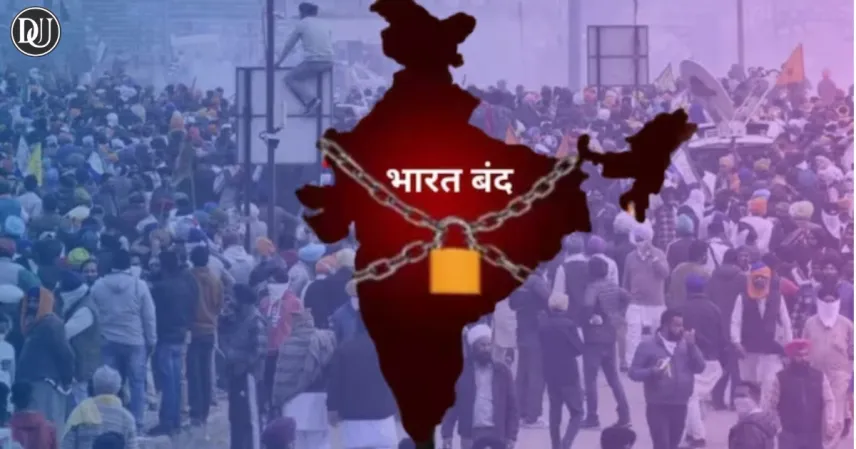A sweeping wave of protests spread across India today, as more than 25 crore workers walked off their jobs in a nationwide strike known as bharat bandh. With participation from various sectors including banking, postal, education, transport, and agriculture, the country is witnessing significant disruptions in public services.
This bharat bandh is not just a one-day affair—it is a culmination of long-standing dissatisfaction among laborers and unions against various government policies. From public sector demands to farmers' issues, the strike has brought together a wide coalition under a single protest umbrella.
Why is the Bharat Bandh Happening?
The bharat bandh has been called by ten central trade unions and supported by several farmer organizations. The central issues include:
-
Opposition to the government’s proposed labor law changes.
-
Discontent over privatization of public sector units.
-
Concerns over increasing unemployment and price rise.
-
Demands for a minimum wage and pensions.
-
Support for farmers protesting against agri-policy reforms.
The protest is both symbolic and direct—showcasing the collective dissatisfaction of millions of Indian citizens, and sending a strong political message.
Which Services Are Affected Today?
The impact of the bharat bandh is being felt across different sectors and regions. While some services continue to operate, many have come to a halt. Here’s a breakdown of what’s functioning and what’s not:
-
Banks: Major banking operations have been disrupted due to the involvement of bank unions. ATMs are functioning, but customer-facing services in public banks are limited.
-
Schools and Colleges: Many educational institutions have shut down or switched to online mode in protest-affected areas.
-
Postal Services: India Post operations are partially affected with delays expected in deliveries and services.
-
Transport: Public transportation has been disrupted in several states. Some bus services are running with reduced frequency, while others are halted.
-
Government Offices: Attendance is low in many government departments, particularly in states where unions hold strong influence.
Unions and Organizations Behind the Strike
The protest is spearheaded by ten central trade unions including:
-
INTUC
-
AITUC
-
HMS
-
CITU
-
AIUTUC
-
TUCC
-
SEWA
-
AICCTU
-
LPF
-
UTUC
These unions have joined forces with farmers’ groups and student organizations to expand the protest’s reach. The coordination among these various groups adds more weight to the demands being made.
States Seeing Maximum Impact
While the strike has a nationwide reach, certain states are seeing more concentrated action:
-
West Bengal: Railways and road transport heavily affected.
-
Kerala: Widespread shutdown, with high participation from unions.
-
Tamil Nadu & Karnataka: Partial disruptions in public transport and schools.
-
Punjab & Haryana: Strong farmer turnout, especially around major highways.
These states have historically had stronger union presence, leading to greater visibility and influence of the bharat bandh.
Government Response So Far
The central government has remained firm on its stance regarding labor reforms and privatization policies. No new concessions have been announced in light of the strike. However, security has been ramped up in key cities and sensitive zones to avoid any escalation.
Authorities have issued notices to government employees, warning against absenteeism, and urging departments to continue functioning with available resources.
Public Reaction and Social Media Chatter
Social media is abuzz with hashtags related to bharat bandh. Videos of protests, blocked roads, and union rallies are being widely shared on platforms like X (formerly Twitter), Instagram, and WhatsApp. While many support the demands, others are questioning the method of striking, especially as daily life disruptions continue.
What Happens Next?
The outcome of this bharat bandh could shape future negotiations between trade unions and the government. If the protest continues to gain traction or evolves into further demonstrations, it could impact policy decisions related to labor and public sector reforms.
At the moment, the bandh has showcased the organizational strength of India’s trade unions and their ability to mobilize on a large scale.










